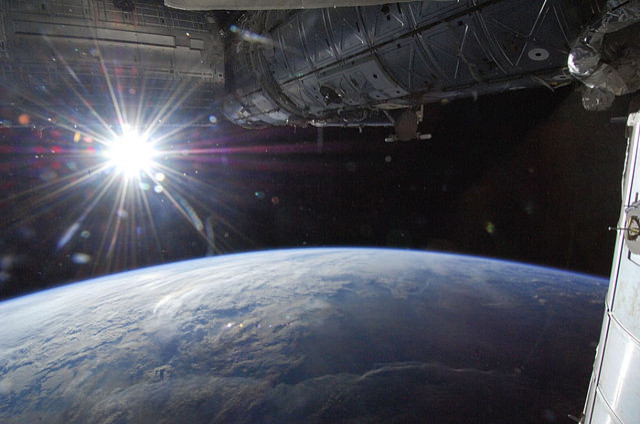Aphelion 2013: Earth Is Farthest From Sun Close To Independence Day

If you’re sweating at a parade or on the beach this Independence Day, you probably won't believe that Earth is almost as far away from the sun as it can possibly get. But it’s true!
On Friday, around 11 a.m. ET, the Earth will reach its aphelion position – the farthest point away from our home star. Our distance from the sun varies throughout the year because Earth’s orbit around the Sun is an ellipse. At any point in time, our planet is anywhere from 91 million miles to about 94.5 million miles away from the sun.
Because Earth’s orbit also doesn’t sync up perfectly with our calendar – one trip around the sun takes about 365.25 days – the day and time of aphelion and perihelion, the point when Earth is closest to the sun, change from year to year. While this year aphelion falls on the morning of July 5 for those on the U.S. East Coast, in 2012 it came at 11 p.m. on July 4. Next year, aphelion will fall on July 3, at 8 p.m. ET.
Both aphelion and perihelion come within a few weeks after the summer and winter solstices (or winter and summer solstices, if you’re in the Southern Hemisphere.) Is there some link between the orbit and the seasons? Short answer: not really.
“It turns out that the proximity of the two dates is a coincidence of the particular century we live in,” the U.S. Naval Observatory says. “The date of perihelion does not remain fixed, but, over very long periods of time, it slowly regresses (moves later) within the year. There is some evidence that this long-term change in the date of perihelion influences the Earth's climate.”
The fact that we’ll be as far from the sun as possible amid scorching July heat might seem counterintuitive, but our seasons are not primarily determined by Earth’s distance from the sun. The reason for the season is the Earth’s 23.5-degree tilt on its axis, which is always pointing in the same direction. Summer for the Northern Hemisphere comes when the planet’s northern half is inclined toward the sun.
Other planets in our solar system experience perihelion and aphelion as well, many to an even greater degree than Earth. Mercury at perihelion is about 28.6 million miles away from the sun, while at aphelion it’s about 43.4 million miles away, a distance about 1.5 times greater.
The average distance between our planet and the sun, about 93 million miles, is also sometimes called an astronomical unit and is used by astronomers to measure distances throughout our solar system. However, the old definition of an astronomical unit, known as the Gaussian constant and based on a certain mathematical way of measuring Earth’s orbit, turned out to be problematic. Thanks to general relativity, a scientist on Jupiter calculating an astronomical unit would get a result differing by about 1,000 meters from an Earth-bound scientist.
To rectify the discrepancy, last August the International Astronomical Union -- which you may remember as the body that demoted poor Pluto to dwarf planet status in 2006 -- voted to fix the astronomical unit at 149,597,870,700 meters (92,955,807.273 miles).
© Copyright IBTimes 2024. All rights reserved.





















